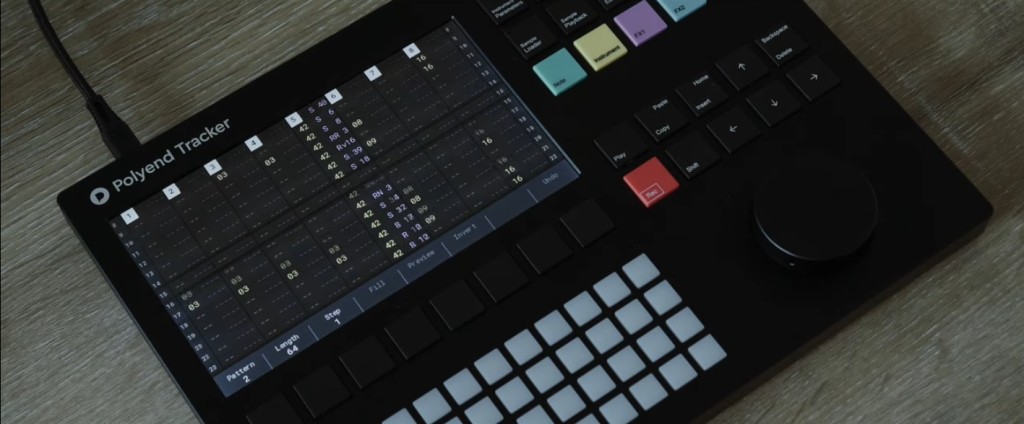Polyend has been gradually releasing a set of teasers for Tracker – and today we get the first big picture, looking like a love child of a monome, 90s tracker software, Maschine, and Push.
I mean, just look at this thing:
It looks massively fast for programming elaborate patterns, whether you’re thinking classic genres or wild, new micro-obsessive inventions.
Okay, if you aren’t familiar with the 90s software, that’s not so important. These tools took a different, more non-linear approach to rhythm programming. It’s responsible for some recognizable styles of the time, with elaborate subdivided rhythmic phrases, but it remains appealing irrespective of genre as a different way of thinking about pattern – and, for many, a really fast way of working. It’s also appealing if you simply find that you keep getting stuck in a rut, repeating ideas, when inside the boundaries of a fixed step grid found on a lot of drum machines and simple hardware sequencers and the like.
Maybe the best way to think of this is, it’s a new direction in how to do standalone hardware for music-making away from the computer, on one hand, and the predictability of Roland-style drum and bassline sequencing and Akai MPC sampling on the other.
I mean, if Polyend pull this off, it will certainly appeal to lovers of this approach – but perhaps to newcomers, too.

That’s exactly what happened when different music editing tools found their way onto Nintendo gaming handhelds. People who had never heard of a tracker before, or even in some cases ever tried making music, often picked up these devices because they were self-contained and fun. (See LSDJ on the Game Boy, or, while it’s its own grid-based approach, Nanoloop.)
I’m also impressed that this takes some of the best one-button access to editing functions from Native Instruments’ Maschine and Ableton’s Push. But at first glance, Polyend’s approach looks far simpler and more direct – it’s really elegant seeing that big jog wheel, and a minimal number of buttons. Whereas Push and Maschine are really interfaces to elaborate computer-style software, Tracker promises to be built around its own, standalone workflow. That is, it could be really fast to work with.
A leak suggested this will all be battery-powered, and even come with its own internal FM synth. See Synth Anatomy from earlier this month. Wait, no, as a commenter observes, that was evidently an FM radio, with sampling. But, hey, now that it’s out there, Jacek, do… think about it!
But you won’t have to wait much longer for the full details. Polyend promises to give us a complete run-down when this thing is ready.
So I hope you all keep yourself and loved ones healthy in these challenging times, and that we’re making some great music together later this year. Work on the joy of music continues, and it’s nice work if you can get it. Watch this space.
Past teasers:
(Oh and yeah – I wasn’t playing coy when I said I didn’t know what was coming when the first teaser came out. Polyend really didn’t tell me! I still know what you know, but – when this drops, full official information.)